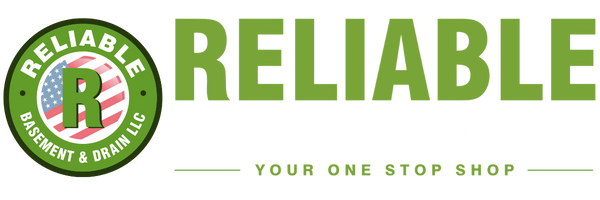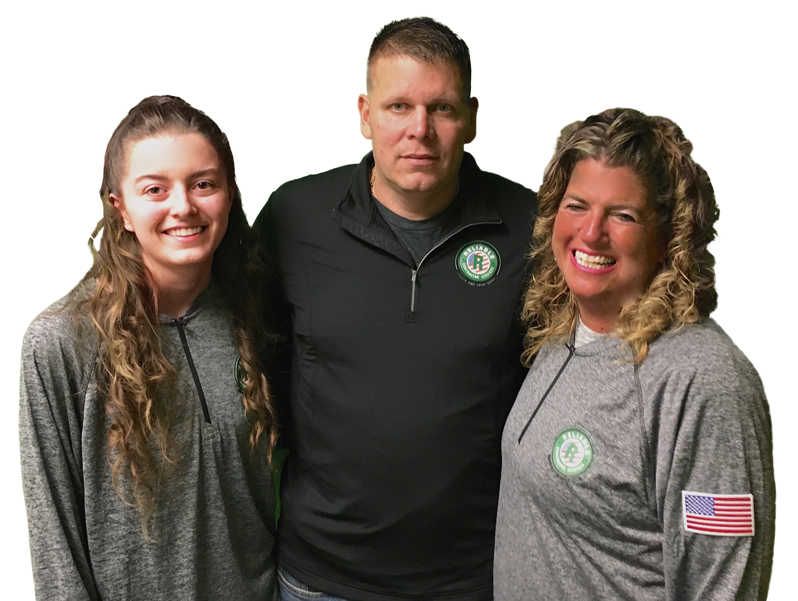Signs of Water Damage Starting in Your Basement
Most of us don’t spend a lot of time thinking about the basement. It’s easy to overlook, especially when we’re focused on the main parts of the house. But the signs of a water problem often start down there long before they show up anywhere else. Spotting basement issues early can make a huge difference, especially in Cleveland where fall brings more rain and cooler temperatures.
You might not notice a damp spot or a small crack right away. A faint smell, a little peeling paint, or a strange patch on the floor might seem unimportant at first. But these can all be signs that basement water damage repair services are needed. Letting them go too long can lead to bigger problems once the weather turns colder and the ground freezes.
Cracks, Damp Walls, and Peeling Paint
One of the first clues is right on the surface. When water pushes into basement walls, it doesn’t always pour in. Sometimes, it just seeps through small gaps in the concrete. Over time, that moisture can leave paint bubbling, flaking, or peeling right off the wall. If you run your hand across it and feel uneven texture or soft spots, water might be to blame.
Hairline cracks in the walls or floor don’t always look like a serious problem, but if they grow or widen, moisture could be getting in. Once the seasons begin to shift and humidity rises, those cracks may pull in more water. In Cleveland, fall can bring heavy rains, and water that soaks into your foundation now may freeze and expand in winter, making cracks worse.
Water often works its way in quietly. By the time you see larger wall discoloration or peeling paint, it’s usually been there a while. That’s why noticing minor changes in surfaces early on is such a big deal.
Musty Smells and Mold Showing Up
If something smells off when you step into the basement, don’t ignore it. A musty smell that sticks around even after cleaning often means dampness is hanging in the air or getting trapped in the walls or carpet. Water that sneaks in through cracks or wicks up from the ground doesn’t have to leave puddles to cause a smell. Sometimes, it’s just enough to feed mildew or mold behind the scenes.
When mold starts to grow, you might see it along baseboards, in dark corners, or behind furniture. It can show up on drywall, around windows, or even across the ceiling if moisture is rising through the air. Fall is a time when basements become more vulnerable to trapped humidity, especially once heat starts kicking on indoors and outdoor air gets cooler.
Waiting too long to deal with mold doesn’t just make the cleanup harder. Once mold spreads into walls or under floors, the job gets bigger. Taking it seriously now helps prevent major issues when winter sets in.
Flooring Issues and Soft Spots Underfoot
Basement floors give a lot away, if you know what to look for. If carpet feels damp or has an odor, even after you’ve cleaned it, water could be coming from below. Tiles may start lifting or feel uneven. Hardwood, if used in lower levels, can swell or warp with repeated moisture contact.
Another sign is the way the floor feels when you walk on it. A soft or squishy spot, especially near corners or walls, could mean the materials underneath are breaking down. Over time, water erodes the layers that hold everything up. A once-solid floor might feel different underfoot, and that’s not something that goes away on its own.
Basements in older Cleveland homes can be more prone to this, especially as cooler months approach and freeze-thaw cycles become more frequent. If the ground outside is holding water, it can push against basement floors and seep in through weak spots.
Rust, Staining, and Other Moisture Marks
Sometimes, water damage doesn’t look wet. It leaves behind signs in other ways. Rust on metal shelving, furnace bases, or along sump pump edges can point to long-term exposure to moisture. You might not see pooling water, but the steady presence of damp air or hidden leaks adds up over time.
Water rings or streaks on walls, especially if they appear without an obvious source, can mean past seepage. If they’re near the floor or below window wells, rainwater might be sneaking in from outside. Stains like these often get mistaken as harmless, but they’re signs that water came through—and may again.
Basements that store water heaters or laundry tables are common places to spot these clues. Looking around the corners and behind shelves before heavy fall rains begin can help you catch them early.
Reliable Basement and Drain provides basement water damage repair services and can address issues like leaking wall cracks and failed sump pumps. Using basement water damage repair services right when you see these issues may prevent the need for bigger repairs later, especially once winter’s freezing temperatures start stressing your home’s foundation.
When Drains Gurgle or Water Pools in Odd Places
Basement drains are supposed to move water out quickly. If you notice gurgling, slow drains, or strange bubbling sounds, that could mean water has nowhere to go. Overloaded or blocked drains may start backing things up inside instead of sending it away like they should.
Sometimes, you’ll see water build up near basement doors or windows after a storm. In Cleveland, fall often brings heavy bursts of rain that test the way your home handles runoff. If the ground around your house is sloped the wrong way or clogged gutters are pushing water down instead of away, water might end up spilling into your basement.
Standing water in laundry areas, under shelves, or near walls could be the start of something more serious. If the basement floor was dry all summer and suddenly it’s not, that’s worth checking before snow season begins.
Reliable Basement and Drain offers French drains and yard drainage improvements that help keep water from entering your basement, particularly important ahead of the wettest months in Cleveland.
Stay Ahead of Bigger Damage This Season
Spotting the early signs of water damage can help you stay ahead of the mess. A lot of the biggest problems in basements start small—a crack here, a damp spot there—and only get worse when the weather turns cold and wet. Fall gives you that last dry window before freezing temperatures settle in and repairs get tougher.
If you’ve noticed changes in your walls, floors, or even smells that weren’t there before, it’s better not to brush them off. Those little things often point to bigger water concerns below the surface. Getting ahead of it now helps protect your basement before the heavy hits of winter roll through Cleveland.
Noticing changes in your basement like wall cracks, damp smells, or odd shifts in air quality? These early signs can point to bigger problems when colder weather rolls in. We help Cleveland homeowners figure out what’s really going on and fix it before it turns into major damage. Our approach starts by finding what’s beneath the surface. Learn how our basement water damage repair services can help you stay ahead of the issue. Give Reliable Basement and Drain a call when you’re ready to get started.

